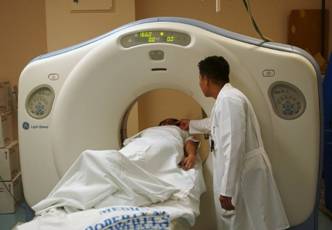Emphysema Threshold on CT Imaging May Have Predictive Value for COPD
According to a recent study published in the American Journal of Respiratory and Critical Care Medicine, patients with chronic obstructive pulmonary disease (COPD) who have been diagnosed with ≥5% emphysema using “thoracic computed tomography (CT) imaging may be at greater risk for poor outcomes” than those with <5%. Researchers also suggested that these patients may find significant value in directed therapy.
To evaluate the correlation between an emphysema diagnosis resulting from the utilization of a CT scan “and patient outcomes, exacerbations, and mortality,” researchers studied data from the National Institutes of Health’s COPD and COPD Genetic Epidemiology studies, including that related to subpopulations and outcome measures. Ultimately, the purpose of the study was to provide clinicians with a set of appropriate directions to accurately interpret radiologic findings and enhance patient decision making.
 Researchers examined patients between the ages 40 and 80 with documented histories of smoking. They also evaluated the “frequency of exacerbations, lung parenchyma on CT scan, and spirometry before and after receiving an administered dose of a short-acting bronchodilator.” Based on this data, researchers discovered a correlation between increased exacerbations and higher mortality rates among patients whose CT scans had released a threshold of approximately 5 percent emphysema.
Researchers examined patients between the ages 40 and 80 with documented histories of smoking. They also evaluated the “frequency of exacerbations, lung parenchyma on CT scan, and spirometry before and after receiving an administered dose of a short-acting bronchodilator.” Based on this data, researchers discovered a correlation between increased exacerbations and higher mortality rates among patients whose CT scans had released a threshold of approximately 5 percent emphysema.
Patients were then divided into two groups: those above the 5 percent emphysema threshold and those below it. Researchers discovered that patients with ≥5% emphysema had “significantly higher average exacerbation frequency,” as well as higher mortality rates.
Further, 26 percent and 15 percent of individuals that had ≥5% emphysema along with “forced expiratory volume in 1 second/forced vital capacity <0.70” were not diagnosed with COPD. Patients with <5% emphysema did not exhibit increased rates of symptoms or exacerbations, which signified that the CT scan findings “were likely related to airway disease.”
A significant link between “all-cause mortality and airflow obstruction” was also observed, supporting the need to use “combined criteria to identify” patients who have an increased risk of exacerbations and death. Based on this data, healthcare providers should address patients with COPD and CT results of ≥5% emphysema, as they may be more at risk for poor outcomes and could benefit from directed therapy.
Click Here to Access the Full Article on Pulmonology Advisor

